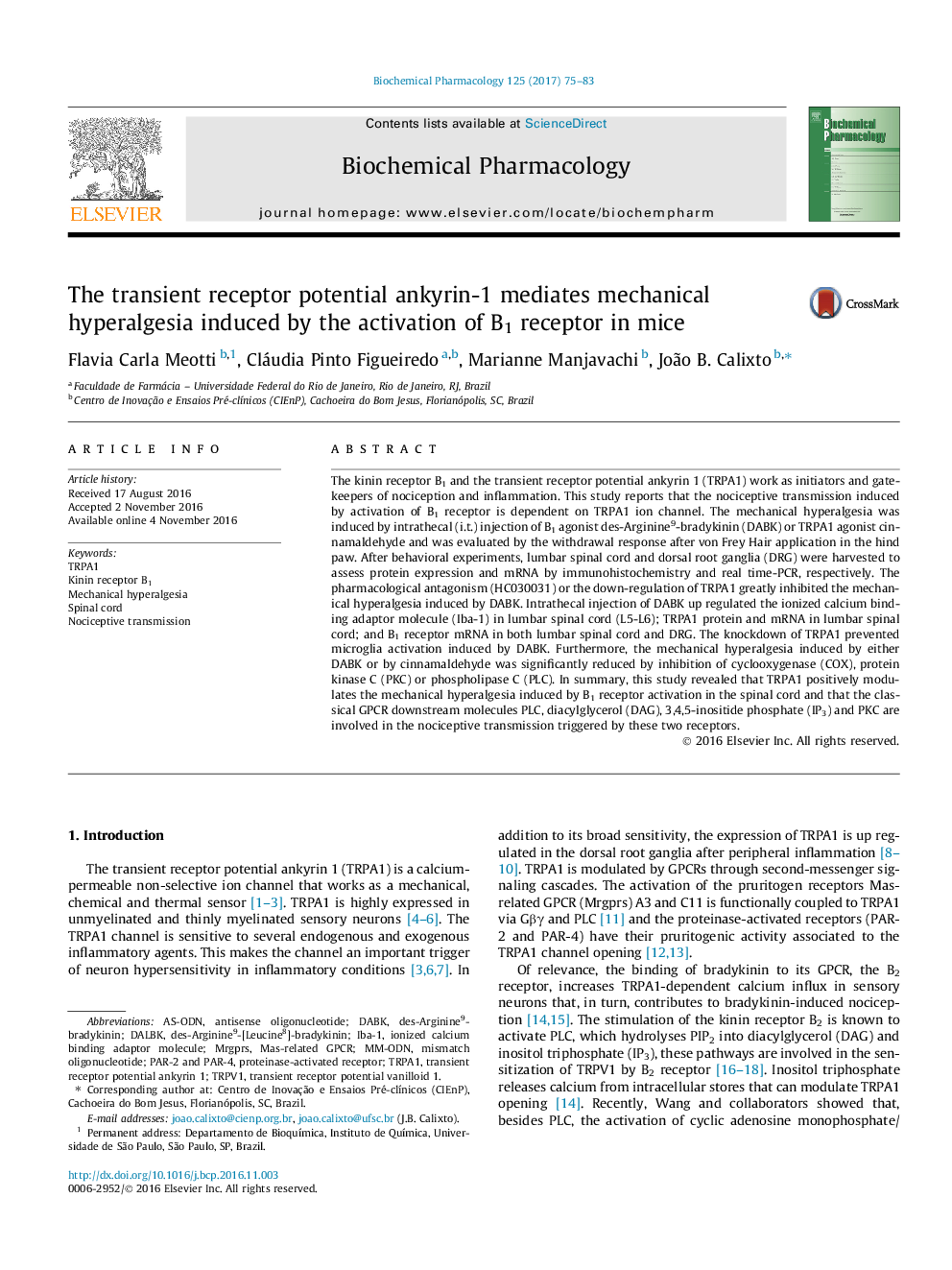| کد مقاله | کد نشریه | سال انتشار | مقاله انگلیسی | نسخه تمام متن |
|---|---|---|---|---|
| 5552327 | 1557888 | 2017 | 9 صفحه PDF | دانلود رایگان |

The kinin receptor B1 and the transient receptor potential ankyrin 1 (TRPA1) work as initiators and gatekeepers of nociception and inflammation. This study reports that the nociceptive transmission induced by activation of B1 receptor is dependent on TRPA1 ion channel. The mechanical hyperalgesia was induced by intrathecal (i.t.) injection of B1 agonist des-Arginine9-bradykinin (DABK) or TRPA1 agonist cinnamaldehyde and was evaluated by the withdrawal response after von Frey Hair application in the hind paw. After behavioral experiments, lumbar spinal cord and dorsal root ganglia (DRG) were harvested to assess protein expression and mRNA by immunohistochemistry and real time-PCR, respectively. The pharmacological antagonism (HC030031) or the down-regulation of TRPA1 greatly inhibited the mechanical hyperalgesia induced by DABK. Intrathecal injection of DABK up regulated the ionized calcium binding adaptor molecule (Iba-1) in lumbar spinal cord (L5-L6); TRPA1 protein and mRNA in lumbar spinal cord; and B1 receptor mRNA in both lumbar spinal cord and DRG. The knockdown of TRPA1 prevented microglia activation induced by DABK. Furthermore, the mechanical hyperalgesia induced by either DABK or by cinnamaldehyde was significantly reduced by inhibition of cyclooxygenase (COX), protein kinase C (PKC) or phospholipase C (PLC). In summary, this study revealed that TRPA1 positively modulates the mechanical hyperalgesia induced by B1 receptor activation in the spinal cord and that the classical GPCR downstream molecules PLC, diacylglycerol (DAG), 3,4,5-inositide phosphate (IP3) and PKC are involved in the nociceptive transmission triggered by these two receptors.
114
Journal: Biochemical Pharmacology - Volume 125, 1 February 2017, Pages 75-83